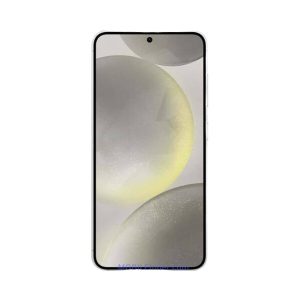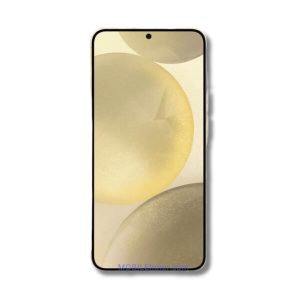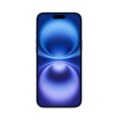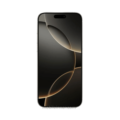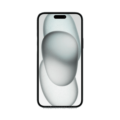- Home
- All Phones
- Compare
- Samsung Galaxy S24 vs Samsung Galaxy S24 Plus Specs
Samsung Galaxy S24 vs Samsung Galaxy S24 Plus Specs
In the ever-evolving world of smartphones, Samsung has again raised the bar with its latest releases, the Samsung Galaxy S24 and the Samsung Galaxy S24 Plus. Released on January 24, 2024, these devices promise cutting-edge technology and a host of features that cater to the diverse needs of smartphone users.
The Samsung Galaxy S24 and S24 Plus boast a sleek and elegant design with a glass front and back, complemented by a sturdy aluminum frame. Weighing in at 167g and 196g respectively, the S24 and S24 Plus are lightweight. Both models are IP68 water-resistant, providing durability and protection against the elements. The devices are available in striking colors, including Onyx Black, Marble Grey, Cobalt Violet, Amber Yellow, Jade Green, Sandstone Orange, and Sapphire Blue.
The Galaxy S24 features a 6.2-inch Dynamic LTPO AMOLED 2X display with a 120Hz refresh rate, providing vibrant visuals and smooth scrolling. On the other hand, the S24 Plus boasts a larger 6.7-inch Dynamic LTPO AMOLED 2X display with the same 120Hz refresh rate, offering an immersive viewing experience. Both devices feature Corning Gorilla Glass Victus 2 for enhanced durability and protection against scratches.
The Galaxy S24 offers flexible memory options with 8GB or 12GB of RAM, paired with internal storage choices of 128GB, 256GB, or 512 GB. In contrast, the S24 Plus provides a generous 12GB of RAM across all variants, with 256GB or 512GB internal storage options. Both models utilize LPDDR5X RAM and UFS 4.0 storage, contributing to faster data access and seamless user experiences.
The Galaxy S24 has a 4000mAh battery, while the S24 Plus boasts a larger 4900mAh battery, ensuring prolonged usage without compromising performance. Both models support fast wired charging at 25W and 45W, respectively, as well as 15W wireless fast charging and 4.5W reverse wireless charging.
General
| Device Type | Smart Phone Smart Phone |
| Model | SM-S921B, SM-S921B/DS, SM-S921U, SM-S921U1, SM-S921W, SM-S921N, SM-S9210, SM-S921E, SM-S921E/DS SM-S926B, SM-S926B/DS, SM-S926U, SM-S926U1, SM-S926W, SM-S926N, SM-S9260, SM-S926E, SM-S926E/DS |
| Released | 24, January 2024 24, January 2024 |
Design
| Dimensions | 147 x 70.6 x 7.6 mm 158.5 x 75.9 x 7.7 mm |
| Weight | 167 g 196 g |
| Build | Glass front, glass back, aluminum frame Glass front, glass back, aluminum frame |
| IP Rating | IP68 IP68 |
| Colors | Onyx Black, Marble Grey, Cobalt Violet, Amber Yellow, Jade Green, Sandstone Orange, Sapphire Blue Onyx Black, Marble Grey, Cobalt Violet, Amber Yellow, Jade Green, Sandstone Orange, Sapphire Blue |
Display
| Display Type Display Technology => A number of display technologies and types used in mobile phones => TFT (Thin Film Transistor), IPS (In-Place Switching), OLED (Organic Light Emitting Diode), AMOLED (Active-Matrix Organic Light-Emitting Diode), Super AMOLED (an even advanced version of AMOLED), Resistive Touchscreen (Resistive touchscreens contain two layer of conductive material with a very small gap between them which acts as a resistance), Capacitive Touchsceen (Capacitive touchscreen technology consists of a layer of glass coated with a transparent conductor) | Dynamic LTPO AMOLED 2X, 120Hz Dynamic LTPO AMOLED 2X, 120Hz |
| Size | 6.2 inches 6.7 inches |
| Resolution | FHD+, 1080 x 2340 pixels WQHD+, 1440 x 3120 pixels |
| Pixel Density Pixel Density (PPI) is refers to the concentration of pixels on a particular display, measured in pixels per inch (ppi). Pixel density is calculated by dividing the diagonal pixel resolution of a display by its diagonal size, higher pixel density better display quality. | 416 ppi 513 ppi |
| Protection Display Protection => Gorilla Glass is a special alkali-aluminosilicate glass shield with exceptional damage resistance that helps protect mobile displays from scratches, drops, and bumps of everyday use, It is always better to go for a smartphone with Gorilla Glass for that added protection and peace of mind. | Corning Gorilla Glass Victus 2 Corning Gorilla Glass Victus 2 |
| Features | 90.9% screen-to-body ratio, Always-On display, 120Hz, 19.5:9 ratio, Hole-punch Notch, HDR10+, Max brightness HBM - 1600 nits, Peak brightness - 2600 91.6% screen-to-body ratio, Always-On display, 120Hz, 19.5:9 ratio, Hole-punch Notch, HDR10+, Max brightness HBM - 1600 nits, Peak brightness - 2600 |
Software
| OS OS => Every computer system run on a base software called Operating System (OS). Operating System controls all basic operations of the computer (such as smartphone, PDAs, tablet computers and other handheld devices). The Operating System allows the user to install and run third party applications (apps), apps are used to add new functionality to the device. | Android 14 Android 14 |
| UI UI or user interface of a device is the look and feel of the on-screen menu system. How it works, its color scheme, how it responds to button presses, all of these things are part of the user interface. | One UI 6.1 One UI 6.1 |
Hardware
| Chipset Chipset is a group of integrated circuits designed to perform one or a more dedicated functions, often with real time computing constraints, Popular smartphones are equipped with more advanced embedded chipsets that can do many different tasks depending on their programming. |
Qualcomm SM8650-AC Snapdragon 8 Gen 3 (4 nm) - USA/Canada/China Exynos 2400 (4 nm) - International Qualcomm SM8650-AC Snapdragon 8 Gen 3 (4 nm) - USA/Canada/China Exynos 2400 (4 nm) - International |
| CPU CPU (Central Processing Unit) mostly known as processors, CPU processes instructions in order to carry out certain functions that make your device operate properly. Processors are often described as the brain of computers, smartphones and tablets, Smartphones and tablets rely on processors to carry out their every task, Processors are an incredibly important factor in selecting any type of computing device, including your smartphone. |
8-core (1x Cortex-X4 • 3.39 GHz + 3x Cortex-A720 • 3.1 GHz + 2x Cortex-A720 • 2.9 GHz + 2x Cortex-A520 • 2.2 GHz) 10-core (1x Cortex-X4 • 3.2 GHz + 3x Cortex-A720 • 2.9 GHz + 3x Cortex-A720 • 2.6 GHz + 4x Cortex-A520 • 1.95 GHz) 8-core (1x Cortex-X4 • 3.39 GHz + 3x Cortex-A720 • 3.1 GHz + 2x Cortex-A720 • 2.9 GHz + 2x Cortex-A520 • 2.2 GHz) 10-core (1x Cortex-X4 • 3.2 GHz + 3x Cortex-A720 • 2.9 GHz + 3x Cortex-A720 • 2.6 GHz + 4x Cortex-A520 • 1.95 GHz) |
| GPU GPU (Graphics Processing Unit) is a single-chip processor designed to rapidly manipulate and alter memory to accelerate the creation of images in a frame buffer intended for output to a display, This includes things such as lighting effects, object transformations, and 3D motion. |
Adreno 750 (1 GHz) Xclipse 940 Adreno 750 (1 GHz) Xclipse 940 |
Memory
| Card Slot Memory Card Slot is a special slot for inserting a memory card. Memory cards allow you to expand the phone's built-in memory, A memory card (sometimes called a flash memory card or a storage card) is a small storage medium used to store data such as text, pictures, audio, and video, for use on small, portable or remote computing devices such as mobile phones, mp3 players, digital cameras. | No No |
| RAM RAM (Random Access Memory) is a type of computer memory that can be accessed randomly, any byte of memory can be accessed without touching the preceding bytes that allows information to be stored and accessed quickly from random locations. RAM is the most common type of memory found in computer systems, smartphones, tablets and other electronic devices. | 8 GB, 12 GB 12 GB |
| RAM Type | LPDDR5X LPDDR5X |
| ROM Internal Storage is a data storage space (flash memory) mostly used in smartphones, tablets and other electronic devices where operating system, apps, music, photos, videos, files and other user data Is stored. | 128GB, 256GB, 512GB 256GB, 512GB |
| Type Design Type called form factor refers to a mobile phone's size, shape, and style as well as the layout and position of major components of phone. There are three major form factors seen in mobile phones => bar phones, folding phones and sliding phones. | UFS 4.0 UFS 4.0 |
Camera
| Primary Camera is able to capture photographs and usually videos, The most important characteristics of a camera are the resolution (measured in megapixels), lens focus type (fixed or automatic), higher megapixel cameras are known to capture higher quality photos, but not always a good measurement of the photos quality. |
Triple Camera 50 MP, f/1.8, 24mm (wide), Dual Pixel PDAF, OIS (Sensor - Samsung GN3, Sensor size - 1/1.56, Pixel size - 1.0µm) 10 MP, f/2.4, 67mm (telephoto), Dual Pixel PDAF, OIS, 3x optical zoom (Sensor - Sony IMX754, Sensor size - 1/3.52, Pixel size - 1.12µm) 12 MP, f/2.2, 13mm, 120˚ (ultrawide), Dual Pixel PDAF, Super Steady video (Sensor - Sony IMX564, Sensor size - 1/2.55, Pixel size - 1.4µm) Triple Camera 50 MP, f/1.8, 24mm (wide), Dual Pixel PDAF, OIS (Sensor - Samsung GN3, Sensor size - 1/1.56, Pixel size - 1.0µm) 10 MP, f/2.4, 67mm (telephoto), Dual Pixel PDAF, OIS, 3x optical zoom (Sensor - Sony IMX754, Sensor size - 1/3.52, Pixel size - 1.12µm) 12 MP, f/2.2, 13mm, 120˚ (ultrawide), Dual Pixel PDAF, Super Steady video (Sensor - Sony IMX564, Sensor size - 1/2.55, Pixel size - 1.4µm) |
| Video |
8K@24/30fps, 4K@30/60fps, 1080p@24/30/60/240fps; HDR10+, stereo sound rec., gyro-EIS 8K@24/30fps, 4K@30/60fps, 1080p@24/30/60/240fps; HDR10+, stereo sound rec., gyro-EIS |
| Features | LED flash, auto-HDR, panorama LED flash, auto-HDR, panorama |
| Selfie |
12 MP, f/2.2, 26mm (wide), Dual Pixel PDAF (Sensor - Samsung S5K3LU, Sensor size - , Pixel size - ) 12 MP, f/2.2, 26mm (wide), Dual Pixel PDAF (Sensor - Samsung S5K3LU, Sensor size - , Pixel size - ) |
| Video |
4K@30/60fps, 1080p@30/60fps 4K@30/60fps, 1080p@30/60fps |
| Features | Dual video call, Auto-HDR, HDR10+ Dual video call, Auto-HDR, HDR10+ |
Media
| FM Radio | No No |
| Loudspeaker | Yes, Stereo speakers Yes, Stereo speakers |
| 3.5mm Jack | No No |
| Alert Types | Vibration & Ringtone Vibration & Ringtone |
Connectivity
| Bluetooth Bluetooth is a wireless communications technology for exchanging data between mobile phones, headsets, computers and other network devices over short distances without wires, Bluetooth technology was primarily designed to support simple wireless networking of personal consumer devices. | 5.3, A2DP, LE, APT-x HD 5.3, A2DP, LE, APT-x HD |
| Wi-fi Wi-Fi is a popular wireless networking technology using radio waves to provide high-speed network connections that allows devices to communicate without cords or cables, Wi-Fi is increasingly becoming the preferred mode of internet connectivity all over the world. | Wi-Fi Direct, Wi-Fi 802.11 a/b/g/n/ac/6e, tri-band Wi-Fi Direct, Wi-Fi 802.11 a/b/g/n/ac/6e, tri-band |
| Wi-fi Hotspot | |
| USB | USB Type-C 3.2, DisplayPort 1.2, OTG USB Type-C 3.2, DisplayPort 1.2, OTG |
| GPS GPS The Global Positioning System is a satellite-based radio navigation system, GPS permits users to determine their position, velocity and the time 24 hours a day, in all weather, anywhere in the world, In order to locate your position, your device or GPS receiver must have a clear view of the sky. | Yes- GPS, GLONASS, BDS, GALILEO, QZSS Yes- GPS, GLONASS, BDS, GALILEO, QZSS |
| NFC NFC (Near field communication) is a set of standards for smartphones and similar devices to establish peer-to-peer radio communications with each other by touching them together or bringing them into proximity, usually no more than a few inches. | |
| Infrared Infrared connectivity is an old wireless technology used to connect two electronic devices. It uses a beam of infrared light to transmit information and so requires direct line of sight and operates only at close range. |
Features
| Sensors Sensors are electronic components that detects and responds to some type of input from the physical environment. The specific input could be light, heat, motion, moisture, pressure and location, The output is generally a signal that is converted to use in computing systems, a location sensor, such as a GPS receiver is able to detect current location of your electronic device. |
Fingerprint (under display, ultrasonic), accelerometer, gyro, proximity, compass, barometer Samsung DeX, Samsung Wireless DeX (desktop experience support) Fingerprint (under display, ultrasonic), accelerometer, gyro, proximity, compass, barometer Samsung DeX, Samsung Wireless DeX (desktop experience support) Ultra Wideband (UWB) support |
Network
| Technology | GSM / CDMA / HSPA / EVDO / LTE / 5G GSM / CDMA / HSPA / EVDO / LTE / 5G |
| 2G Network | GSM 850 / 900 / 1800 / 1900 CDMA 800 / 1900 GSM 850 / 900 / 1800 / 1900 CDMA 800 / 1900 |
| 3G Network |
HSDPA 800 / 850 / 900 / 1700(AWS) / 1900 / 2100 CDMA2000 1xEV-DO HSDPA 800 / 850 / 900 / 1700(AWS) / 1900 / 2100 CDMA2000 1xEV-DO |
| 4G Network | B1, 2, 3, 4, 5, 7, 8, 12, 13, 17, 18, 19, 20, 25, 26, 28, 32, 38, 39, 40, 41, 66 B1, 2, 3, 4, 5, 7, 8, 12, 13, 17, 18, 19, 20, 25, 26, 28, 32, 38, 39, 40, 41, 66 |
| 5G Network | n1, 2, 3, 5, 7, 8, 12, 20, 25, 26, 28, 38, 40, 41, 66, 75, 77, 78 SA/NSA/Sub6 n1, 2, 3, 5, 7, 8, 12, 20, 25, 26, 28, 38, 40, 41, 66, 75, 77, 78 SA/NSA/Sub6 |
| SIM SIM (Subscriber Identity Module) is a small card that contains mobile network subscriber's account information. This allows the phone using the card to attach to a mobile network. The SIM card is most commonly associated with GSM and UMTS mobile networks. Moving a SIM card from one phone to another allows a subscriber to switch mobile phones without having to contact their mobile network carrier. SIM cards can also be used by a phone to store limited amounts of data, such as phone numbers and text messages. | Nano SIM, eSIM Nano SIM, eSIM |
| Dual SIM | Yes - Dual stand-by Yes - Dual stand-by |
| Speed | HSPA, LTE-A (up to 7CA), 5G HSPA, LTE-A (up to 7CA), 5G |
Battery
| Battery Type Battery Type => Cell phones run on various kinds of batteries depending on the manufacturer, phone size or shape and features. There are basically four types of cell phone batteries => Lithium Polymer, Lithium Ion, Nickel Metal Hydride and Nickel Cadmium. | Li-Ion (Lithium Ion) Li-Ion (Lithium Ion) |
| Capacity Battery Capacity is a measure (typically in Amp-hr) of the charge stored by the battery, and is determined by the mass of active material contained in the battery. The battery capacity represents the maximum amount of energy that can be extracted from the battery under certain conditions. | 4000 mAh 4900 mAh |
| Charging | 25W wired, PD3.0, Fast charging 45W wired, PD3.0, Fast charging |
| Wireless Wireless Charging (Inductive Charging) uses an electromagnetic field to transfer energy between two objects. This is usually done with a charging station. Energy is sent through an inductive coupling to an electrical device, which can then use that energy to charge batteries or run the device. |
15W wireless Fast charging 4.5W reverse wireless 15W wireless Fast charging 4.5W reverse wireless |
| Placement | Non removable Non removable |
| Standby Standby Time is the total amount of time that you can leave your is fully charged, turned on and ready to send and receive calls or data transmissions before completely discharging the battery. | NA NA |
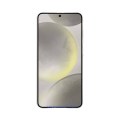
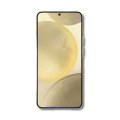
|
Disclaimer Note
We cannot guarantee that the information on this page is entirely 100% accurate.

